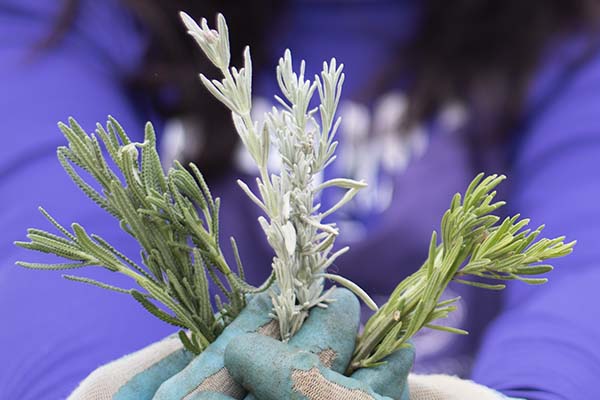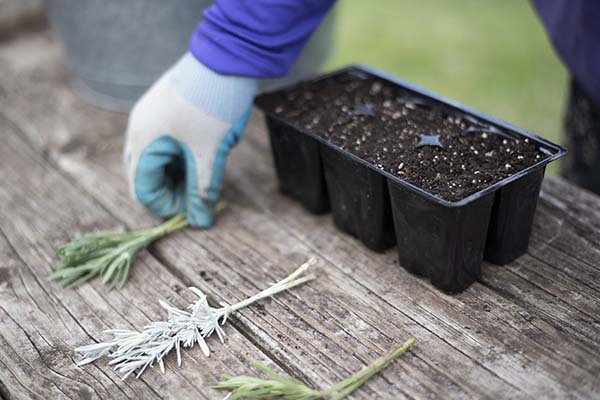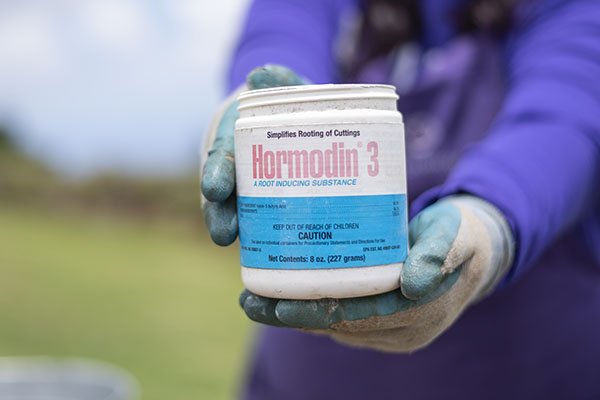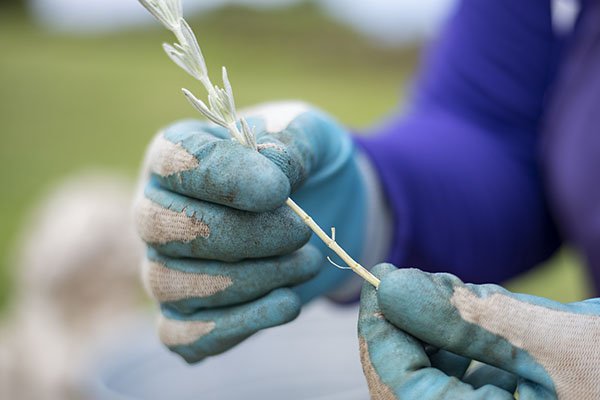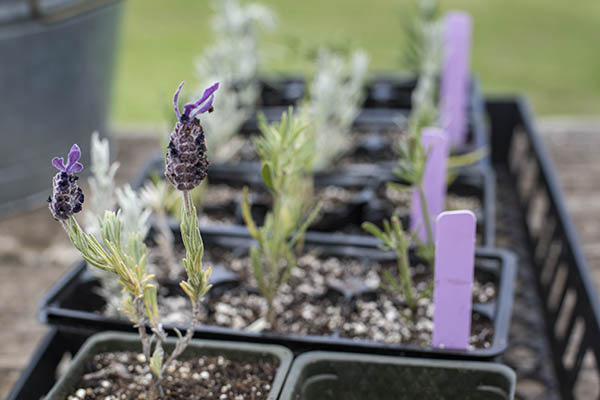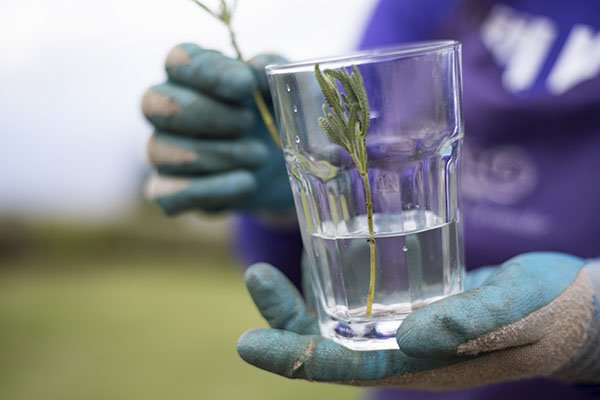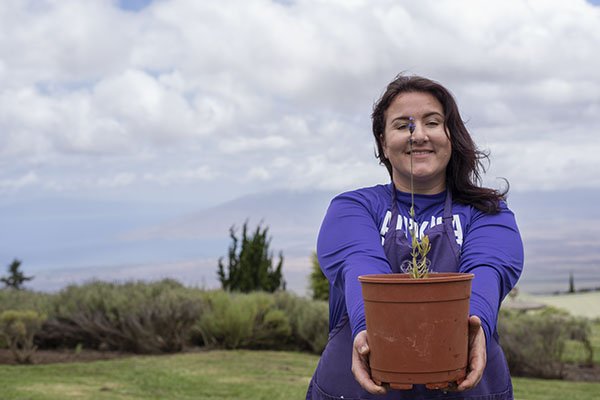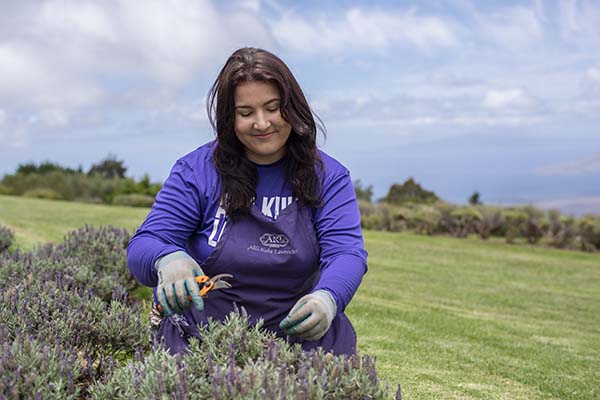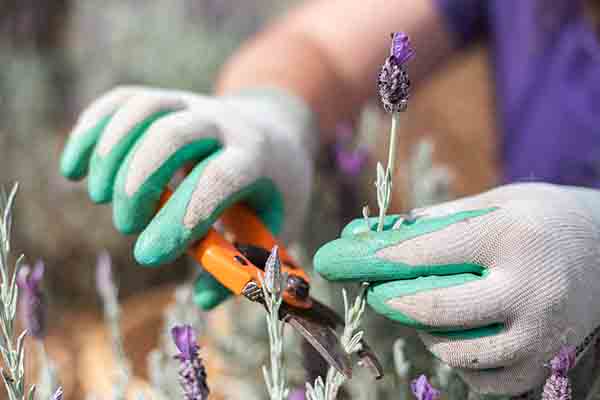How to Propagate Lavender
Propagating lavender or any other plant is a delightful way to interaction with and support the reproduction of healthy, thriving plants. Watching them root and mature with your assistance is such a rewarding process. We have a video tutorial for you to enjoy and have also broken down the few easy steps below.
When to Propagate Lavender
If you are familiar with gardening, then you may already be familiar with grow zones, if not it can be good to determine your grow zone when deciding when to propagate your lavender. Check out this USDA Plant Hardiness Zone Map to learn more.
Here in Hawai’i our weather is warm enough that we can propagate cuttings successfully anytime of the year. For colder climates, you will find the spring time to be the best time, which will give the plant enough time to root and strengthen before the colder temperatures of winter hit. In the coldest zones, the best lavender to propagate is the english lavender, it is a heartier, cold-friendly type of lavender. If French and Spanish Lavender are your desired types of lavender, we recommend growing them in pots so you can bring them indoors during the winter.
What You Will Need For Propagating Lavender
The materials you need are very few. To prepare yourself to propagate lavender, we suggest the following supplies:
- Starter Trays or 3″ Starter Pots
- Garden Clippers
- Potting Soil
- Root Stimulating Hormone (available at most garden stores)
- Access to a mature lavender plant
Ten Steps for Propagating Lavender:
- Source stems from any variety of your favorite lavender
- Cut a 4″ – 6″ stems from the plant using garden clippers
- Remove leaves gently from the bottom 1/3 of each clipping
- Fill potting soil to the top of your potting tray
- Make small holes in the soil about 2-3″ deep for each stem
- Dip the bottom portion of the stem in root hormone
- Insert stems into each hole and gently pack the soil firmly around it
- Place the newly planting clippings in direct sunlight
- Water them well and daily for approximately 2 – 3 months
- Transplant starters to the ground or a larger pot once roots are established
Tips for Propagating Lavender:
- Select clippings in the early to late Spring when the plant are beginning or about to bloom and there is plenty of moisture in the air
- While you may select a flowering stem, selecting a non-flowering stem will allow the plant to focus it’s energy on feeding the roots, not the flower; and will likely be ready for propagation sooner.
- Always pinch lower leaves from the stems. Tearing will remove the nodules that are needed to grow into roots.
- Making holes in your soil before inserting the stems will help keep the rooting compound along the entire stem and not rub off.
- Cinnamon, known for it’s antimicrobial and antibacterial properties, has also been known as an alternate substitute for rooting hormone.
- When you remove your starter from the planting tray, look for thick white roots; which will indicate the plant is healthy and that it is ready to be transplanted.
Can you propagate lavender in water?
Lavender can be propagated using water. However, because lavender is susceptible to root rot, it can be tricky and we have found that soil propagation is the best method for our needs.
Quick tips:
- To propagate using water, fill a glass about half way with water.
- Follow the same method for clipping and preparing lavender stems, leaving a few inches at the bottom of the stem.
- Place the lavender into the cup, making sure the water is not high enough to touch the leaves.
- Leave in water, you may need to change the water every few days to make sure there is fresh water for your plant.

